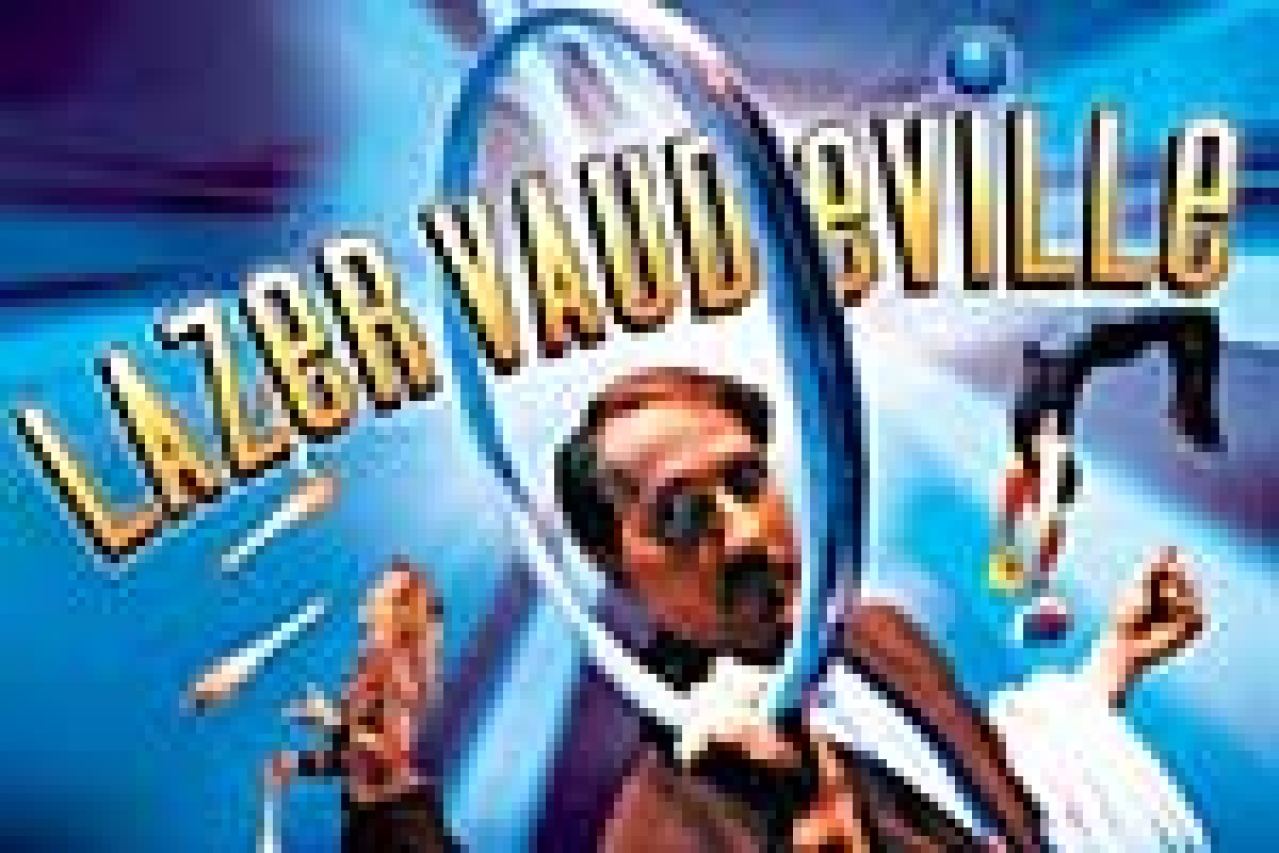Lazer Vaudeville

Photo © Dike Peterson
Bowling pins, building blocks, bouncing balls, bicycle hoops, chainsaws, and tambourines — the performers of Lazer Vaudeville can juggle them all, and they even try to let the audience in on the fun. As ticket holders enter the John Houseman Theater (which will close its doors after this show closes on May 14), ushers hand them three multicolored handkerchiefs to be used during a five-minute lesson at the beginning of the show. I have to admit, they’re pretty good teachers, though the elderly woman standing next to me was a little concerned about my coordination (or lack of same).
Thankfully, there were no injuries to be reported and the show went off mostly without a hitch. Even the pros drop a ball every now and then, but that won’t stop these performers from exciting your children with acrobatics and a colorful visual display. Armed with neon costumes and a host of handheld items, Carter Brown, Cindy Marvell, and Nicholas Flair put old-time vaudeville under black light in a production that includes a circus, a history lesson, and a laser-light show.
Lazer Vaudeville is billed as a high-tech answer to a centuries-old form, but the lighting technology in it is far from mind-boggling. Any college student who owns a Jerry Garcia poster could probably have taken care of the black light element, and there are probably one or two who could also put on a decent laser display. What’s surprising is that nobody has previously used these gimmick to this extent. Glowing costumes and airborne objects make perfect entertainment for today’s children, whose attention spans are decreasing by the nanosecond. The cast and crew milk these devices for all that they’re worth, with enough glittering lights to warrant the use of industrial-strength sunglasses on the part of the audience.
In one sketch, a “Neon Cowboy” twirls his iridescent 10-gallon hat and jumps through bright green and orange lassoes. In another, an instantly recognizable Mondrian painting is projected onto a large screen and Nicholas Flair uses shadow puppetry to fill some of the squares with an unknown rectangular object; when the screen rises, we see the performer juggling three multicolored cigar boxes and using them for acrobatic leaps and backflips. Cindy Marvell leads another routine, inspired by Zen Buddhism, that features tambourines adorned with shiny yin-yang symbols.
Although many of the stunts are impressive, the showmanship of the performers is less so. Each member of the trio speaks in an over-enunciated manner that seems to have been learned from a handbook titled How to Talk to Children. Cindy Marvell keeps the same smile throughout, Carter Brown’s heavily scripted comic repartée falls flat, and Nicholas Flair’s physical comedy seems effortful. The show as a whole lacks a sense of ease, and things only get tenser when one of the performers makes a mistake.
No lighting designer is credited in the program, but Cory Simpson is responsible for the laser design. His creations take center stage during two interludes: a five-minute history of vaudeville and a laser-light show toward the end. The first has educational value for the kids in the audience but the second is overlong and unnecessary. Jennifer Johanos’ costumes are merely serviceable for the most part, but the neon cowboy’s body suit is inspired in its detail. As a director and a performer, Carter Brown might have devoted an extra week or so to preparation.
Shows of this type can vary wildly from performance to performance; one dropped ball or hoop during a matinee can throw off an entire routine, while clean execution of the same routine in the evening can make it a great success. Hopefully, that description will be applicable to most performances of Lazer Vaudeville.











